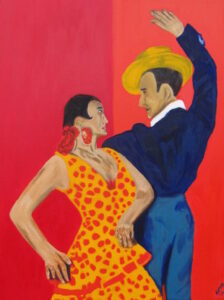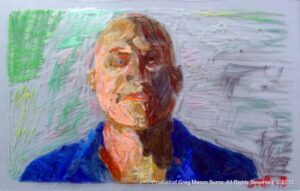
A truth about flamenco is that it’s more commercial than it should be
Telling the Truth in Art
Nothing irks me more in art than criticism that uses modern fashion as a justification for it’s existence. In fact, if a piece of art is being criticized because the piece fails to follow modern fashionable conventions then the piece is very likely by definition “art”. I don’t say this meaning that art must or even should break conventions (I don’t believe that at all). But art that conforms to prevailing fashions intentionally is missing something, and that missing piece is truth.

No arm pit hair? Find the photo first.
Leaving Out Information is a Statement
That’s the truth of the situation, and denying that truth is unproductive. Not putting the hair there while maintaining the truth would require another element to the art. In other words, not putting the hair there makes a statement. The critic needs to focus on if the statement is bad or good, and then secondarily if the piece of art needs to be beautiful in order to fulfill it’s purpose. Saying that the arm pit hair makes the painting unbeautiful and therefore bad art is just dumb.

Adding hair here would be a brutal lie
Report on What Actually Happened
There are many writers who have talked about the truth in their form of art. Stephen King in On Writing wrote that fiction is a lie, but that the truth is the foundation that gives that lie believability. He has been heavily criticized for saying that a character took a Coke out of the fridge instead of a “soda” or “pop”. To him this is crazy because the character took a Coke out, not something else. That’s what was in his head, that’s what the character did, that’s what the truth is.
Criticizing him for using a brand name instead of a generic word is stylistic at best and doesn’t get to the heart of the matter. It’s not good criticism. Good criticism would talk about if he said something in a way that made the reader (or the viewer) believe that it was true or not. After all, art is a commentary on real life. If there’s no substance to it then what’s the point?
And yes, Stephen King is one of the most commercial writers out there. My point is that even commercial work has artistic value and deserves to be criticized likewise. If King writes in a way that a few billion people like, then have it, as long as he’s telling the truth. The truth doesn’t need to be Gabriel Marquez just like Damien Hirst doesn’t get to be an artist just because what he does is different (he doesn’t even do all of his own work these days). In fact, I’d argue that Hirst tells the truth less than King does because King actually set the market whereas Hirst has had numerous copyright infringement cases agaisnt him. Would King leave the arm pit hair out? Would Hirst? Does it matter? Only if the art world ignores it if it’s left in, because only then will the critic understand why it’s there.

There’s even truth in surrealism